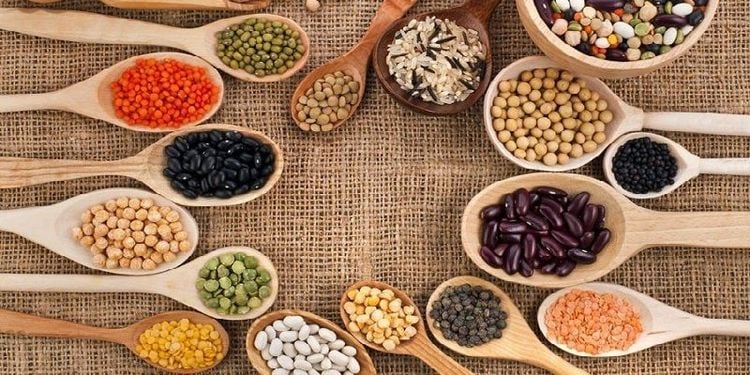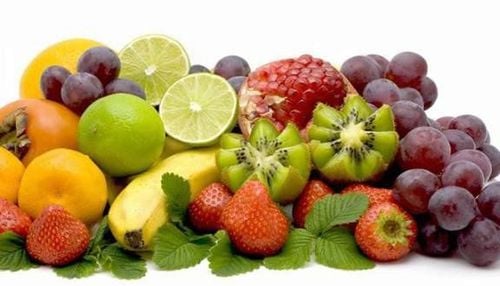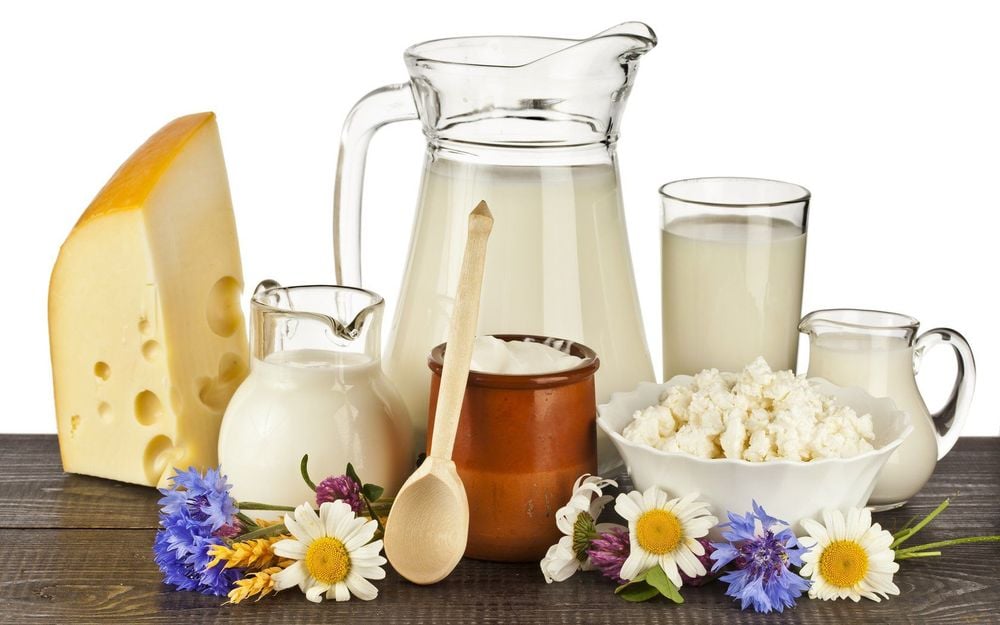This is an automatically translated article.
Most preschoolers begin to be curious about food and develop eating habits with their own needs and preferences. Parents need to ensure the right nutrition for preschool children, including healthy snacks and meals.The article was professionally consulted with Doctor Ho Thi Hong Tho - Neonatologist - Pediatrics - Neonatology Department - Vinmec Phu Quoc International General Hospital.
1. Cereal grains
Whole grains contain fiber that aids digestion and complex carbohydrates that provide energy. This is also an excellent source of B vitamins in a preschool child's diet. Some ready-to-eat cereals also provide a variety of vitamins and minerals.There are 2 types of grains:
Whole grains: Use the whole grain and have more fiber, iron and B vitamins. Examples include whole wheat flour and bread, oatmeal, whole grain cornmeal, brown rice, and whole wheat pasta. Refined: Has been treated for a smoother texture and longer shelf life. Includes white flour and bread, white rice and most pastas. Some foods are made with both grains. Nutrition organizations recommend that you eat at least half of your grains from whole grains.
Daily Needs for Children 2 - 3 Years: Children 2 to 3 years old are close to 3 ounces (85 grams) of cereal daily. Suggestions for school children to eat specifically are as follows:
Breakfast: 1 slice of whole-wheat toast, 1 cup of toasted oats or 1/2 cup of oatmeal; Lunch: Sandwiches; Dinner: 1/2 cup whole-wheat pasta, 1/2 cup whole-wheat rice. 4-Year-Old Child's Daily Needs: 4-year-olds need 5 ounces (142 grams) of whole grains per day. Example:
Breakfast: 1 cup of oatmeal, 1 small bagels made from whole grains; Lunch: Sandwiches; Dinner: 1/2 cup brown rice, small pizza. Snack: 5 whole-wheat crackers, 2 rye crackers.

Ngũ cốc chứa chất xơ hỗ trợ tiêu hóa và carbohydrate cung cấp chất dinh dưỡng cho trẻ
2. Vegetables for preschool children
Vegetables provide plenty of fiber, along with vitamins C, A, and potassium. Most vegetables contain disease-fighting antioxidants that can reduce your risk of cancer and heart disease later in life.Over the course of a week, try to incorporate a variety of colorful vegetables in your baby's nutrition - including dark broccoli, light green beans, orange carrots, red tomatoes, and more. This way, your baby will get all the nutrients that each vegetable has to offer.
Daily needs of children 2 - 3 years old:
Children aged 2 to 3 years need 1 cup of vegetables per day, equivalent to 1 cup of boiled vegetables or 2 cups of raw vegetables, 1 large tomato or 2 carrots fit. Specific examples:
Breakfast: 1/4 cup cooked mushrooms (in 1 scrambled egg); Lunch: 1/2 cup oven-roasted sweet potatoes, 1/2 cup mashed baked potatoes with 1/4 cup chopped tomatoes, 1/4 cup cooked chickpeas; Dinner: 1/4 cup cooked red and broccoli, 1/4 cup boiled peas, 1/4 cup tomato sauce; Snack: 1/4 cup sliced cherry tomatoes. Daily needs of 4-year-olds:
4-year-olds need 1.5 cups of vegetables per day, specifically as follows:
Breakfast: 1/2 cup of tomato juice; Lunch: 1/2 cup chopped green salad with 1/4 cup sliced cherry tomatoes, 1/2 cup boiled squash, 1/2 boiled baby corn; Dinner: 1/2 baked sweet potato, 1/2 cup boiled corn, 1/2 cup cooked broccoli, 1/2 cup boiled spinach; Snack: 1/4 cup boiled cauliflower and 1/4 cup boiled broccoli.
3. Fruits for preschool children
Eating fruit also provides plenty of fiber, along with vitamins C and A and potassium. In addition, most fruit-based products contain disease-fighting antioxidants, which reduce the risk of cancer and heart disease later in life.Nutrition for preschool children needs to include a variety of colorful fruits so that the baby can receive different nutrients.
Daily needs of children 2 - 3 years old:
Children from 2 to 3 years old need 1 cup of fresh fruit per day, equivalent to 1/2 cup of dried fruit; 1/2 large apple, 1 large banana and 1 medium grapefruit.
Suggestions for reference:
Breakfast: 1/4 cup sliced strawberries, 1/4 cup blueberries, 1/2 cup sliced banana; Snack: 1/4 cup grapes (cut in quarters), 1/2 cup canned fresh fruit syrup; Dessert: 1/2 cup apple sauce, 1/2 cup fruit cocktail without added sugar. Daily needs of 4-year-olds:
4-year-olds need 1 - 1.5 cups of fresh fruit per day. Specifically:
Breakfast: 1/2 cup sliced banana, 1/2 grapefruit; Lunch: 1/2 orange (sliced), 1/2 cup apple; Snack: 1/2 cup raisins, 1/2 apple (sliced); Dessert: 1/2 cup sliced strawberries, 1/2 cup canned peaches, 1/2 cup sliced berries.

Trái cây cung cấp nhiều vitamin C và A và kali cho nhu cầu dinh dưỡng hàng ngày của trẻ
4. Dairy products
Most dairy products are an excellent source of calcium, which helps keep your baby's teeth and bones strong. This nutrient is also a great source of protein - great for kids who don't like meat.Children 2 years of age and older should switch to low-fat or fat-free milk. Make sure to get the same amount of calcium and vitamin D, but with less fat and calories. Solid fats are mostly saturated fats, which can raise blood cholesterol levels. Children will benefit if they get into the habit of drinking low-fat milk at an early age.
Daily needs of 2 - 3 year olds:
2 to 3 year olds need 2 cups of buttermilk per day. In which, 1 cup of milk, yogurt or soy milk is equivalent to 2 slices of chopped hard cheese (such as cheddar, mozzarella), 1 cup of milk pudding or 1/2 cup of ice cream.
Here are some suggestions for what school children need to eat to get enough dairy:
Breakfast: 1/2 cup of fresh milk or yogurt; Lunch: 1 slice of cheddar cheese, 1/2 cup of milk; Dinner: 1/2 cup milk, 1/3 cup shredded mozzarella; Snack: 1/2 cup yogurt, 1 slice of Swiss cheese; Dessert: 1/2 cup frozen yogurt. Daily needs of 4-year-olds:
4-year-olds need 2.5 cups of buttermilk per day, available in the menu:
Breakfast: 1/2 cup milk, 1/3 cup shredded cheddar cheese (in eggs or on toast); Lunch: 1/2 cup milk and 1 slice of cheddar cheese; Dinner: 1/2 cup milk, 1/3 cup grated Parmesan cheese; Snack: 1/2 cup yogurt, 1 slice of cheese; Dessert: 1/2 cup pudding, 1/2 cup frozen yogurt.

Canxi và vitamin D giúp cho con bộ răng và xương chắc khỏe
5. Protein protein
Meat, poultry, seafood, beans, eggs, soy products and nuts are all good sources of protein. Unless your child is on a vegetarian diet, try to give them seafood at least twice a week.Choose lean or low-fat meat and poultry, remove the skin from chicken before cooking. Nutrition for young children with protein will provide additional iron, zinc and some B vitamins.
Daily needs of children 2 - 3 years old:
Children 2 to 3 years old need about 2 ounces (56 grams) of protein everyday. Of which, 1 ounce of protein is equivalent to 1 ounce (28 grams) of meat, fish or poultry; 1 egg; 1 tablespoon nut butter; 1/4 cup cooked beans; 1/8 cup tofu; and 14 grams of nuts or seeds.
Suggestions:
Breakfast: 1 egg, 28g turkey sausage; Lunch: 28g sliced chicken; Dinner: 1/4 cup mashed kidney beans, 28g salmon or tuna. Daily Needs for a 4-Year-Old:
A 4-year-old needs about 4 ounces (113 grams) of protein per day. Specific examples:
Breakfast: 1 egg, 1/4 cup mixed tofu, 1 tablespoon nut butter; Lunch: 28g sliced turkey, 1 tablespoon peanut butter (thinly spread on bread or crackers), 1 egg; Dinner: 28g cooked ground beef and 1/4 cup bell peppers, 1/4 cup fried beans, 28g roast beef, and 1/4 cup cooked lentils.
6. Oils and fats: Use sparingly
Oils are not considered a separate food group, but do provide several nutrients needed for a healthy diet, and are a major source of vitamin E. However, we only need a small amount of oil.
Cha mẹ cần thêm một lượng dầu nhỏ vào bữa ăn của trẻ
Most children get all the oils they need from the foods they eat, in salad dressings or cooking oils. Children 2 - 3 years old need about 3 teaspoons of oil per day, and children 4 years old need 4 teaspoons of oil per day.
In summary, the nutrition for preschool children needs to have all 5 main food groups (grains, fruits, vegetables, milk and protein) in each meal. But your baby may not always be able to eat the recommended amount each day. As long as you prepare a variety of healthy foods each day, your baby will eventually get all the nutrients he needs for a week.
For children to be healthy and develop well, it is necessary to have a nutritious diet in terms of quantity and quality balance. If children are not provided with adequate and balanced nutrients, it will lead to diseases of excess or lack of nutrients, which adversely affect the comprehensive development of children in terms of physical, mental and motor skills.
Children who do not eat properly are at risk of micro-mineral deficiency causing anorexia, growth retardation, malabsorption,... If they notice the above signs, parents should supplement their children with products. The supplement contains lysine, essential micro-minerals and vitamins such as zinc, chromium, selenium, and B vitamins to help fully meet the nutritional needs of children. At the same time, these essential vitamins also support digestion, enhance nutrient absorption, help improve anorexia, and help children eat well.
Parents can learn more:
Signs of zinc deficiency in children
Micronutrient deficiency and failure to gain weight in children
Please regularly visit Vinmec.com website and update useful information to take care of your child. Take care of the baby and the whole family.
Reference source: babycenter.com














